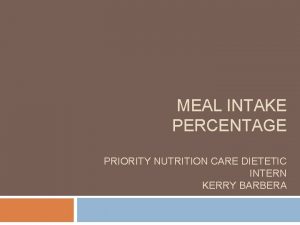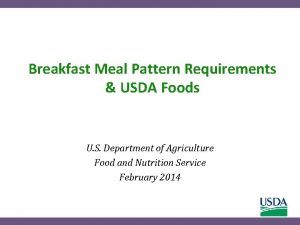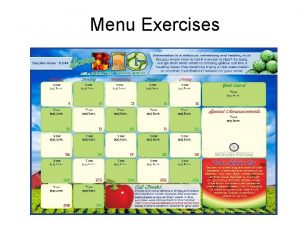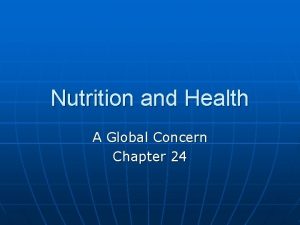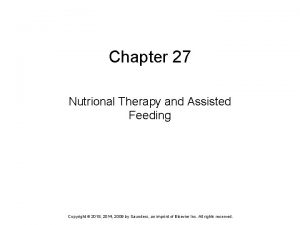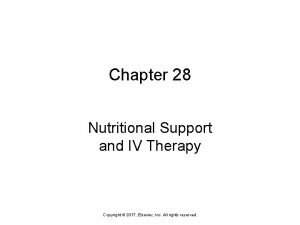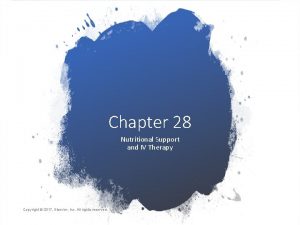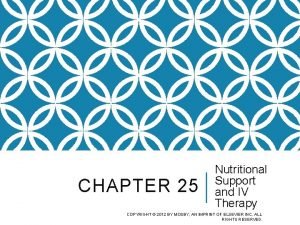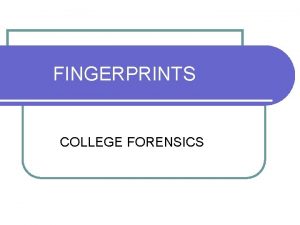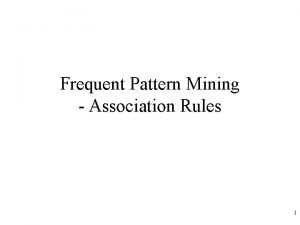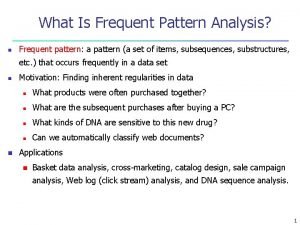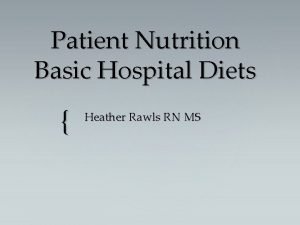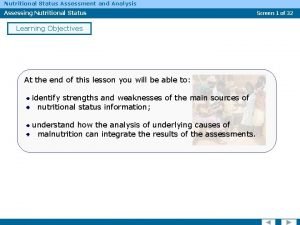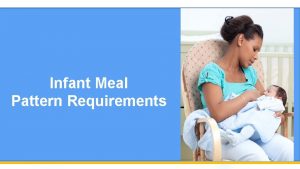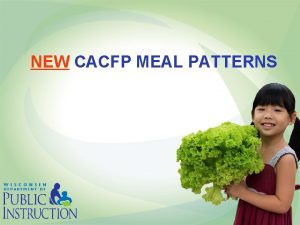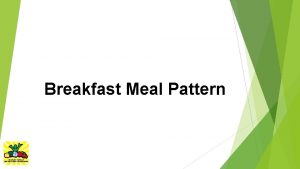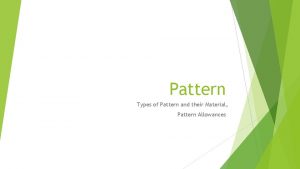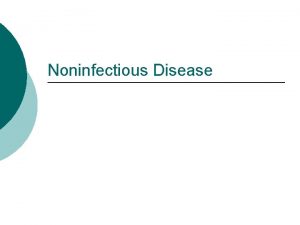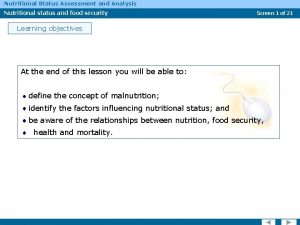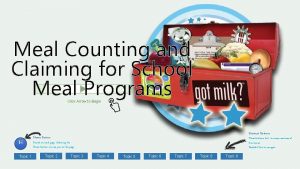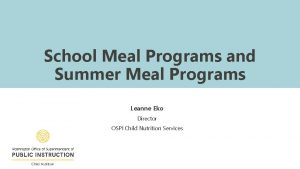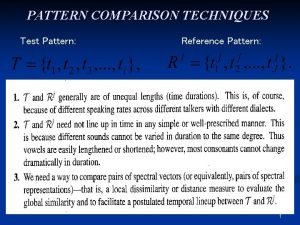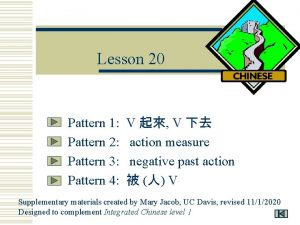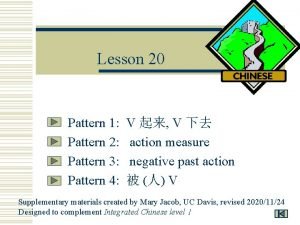Meal Pattern and Nutritional Quality Section 3 Performance



























- Slides: 27

Meal Pattern and Nutritional Quality Section 3 Performance Standard II

Section 3: Meal Pattern and Nutritional Quality Conducted by a Public Health Nutritionist (PHN) Evaluation of breakfast and lunch menus at review site(s) Calories • Meal Weekly Average components Saturated • Dietary specifications Fat Weekly Average More in-depth for uncertified/high risk School Food Authorities Sodium (SFAs) Weekly Average Trans Fat Daily Requirement

Review Time Periods Review Period: the month for which the last claim was submitted Week of Review: one week of the SFA’s choice from the review period Day(s) of Review: the day(s) on which the onsite visit occurs

Section 3 Overview • Email, phone call, pre-review questions • Documentation requested and reviewed • Documentation review continued • Meal service observation • Technical assistance • Corrective action; ongoing communication as needed • Nutrient analysis, if applicable Prior to onsite review During onsite review After onsite review

Prior to the Onsite Review Email from PHN Introduction What to prepare for review Request to submit documentation prior to onsite visit Phone call from PHN Two questionnaires • Meal Compliance Risk Assessment Tool (MCRAT) • Dietary Specifications Assessment Tool (DSAT)

Dietary Specifications Assessment Tool (DSAT) Low Risk Likely in compliance with dietary specifications Validated by onsite observation High Risk At risk for noncompliance with dietary specifications Weighted nutrient analysis for one week of breakfast and lunch menus will be conducted

6 Cents Menu Certification (Performance-Based Reimbursement) Meal documentation and service reviewed for all menu types and grade groups (not just for site(s) selected for review) Menu workbook completed by SNT If not certified at the time of the Administrative Review (AR), the SFA is required to become certified through the AR Full nutrient analysis (NA) required (completed by SNT) SFA uploads finalized workbooks and nutrient analysis materials to online system for SNT to approve

Extent of Section 3 Review Low risk SFAs High risk or Noncompliant SFAs • Evaluate compliance with daily and weekly • Evaluate compliance with minimums for daily and weekly minimums components for components – Site/s selected for AR • Evaluate compliance with dietary specifications – NA for targeted menu review site

Nutrient Analysis Required for: • Certified SFAs identified as “high risk” on DSAT • Certified SFAs with systemic noncompliance • Completed after all component shortages are corrected and all correct documentation is received

During the Onsite Review Meal Components and Quantities • Evaluated for both the day of review and week of review • Components and portion sizes Verification of Dietary Specifications Assessment Tool (DSAT) • High-risk result nutrient analysis Offer Versus Serve (OVS) • Signage and staff execution

Day of Review • Are standardized recipes being followed? • Are correct products being used? Meal Preparation Observation • Are all components available to all students? • Do portion sizes meet the minimum amounts? • Do reimbursable meals contain all required components? • Is Offer Versus Serve being implemented properly? Meal Service Observation

Day of Review Question: What happens if the School Nutrition Team reviewers identify a missing component or inadequate quantity prior to meal service? Answer: We will inform the staff of the mistake and provide an opportunity to make corrections.

Signage Requirements Clearly communicate how to select a reimbursable meal With OVS: • Include “ 3 of 5 components” (lunch) and “ 3 items” (breakfast) language • Include requirement to select ½ cup fruit and/or vegetable

Common Findings – Day of Review Signage is missing, inaccurate, or incomplete Some incomplete meals are incorrectly counted as reimbursable Confusion among staff about OVS and identifying reimbursable meals Standardized recipes not followed Students incorrectly sent back to take more food, students required to select milk

Common Findings – Review Period Weekly menu does not meet all minimum requirements Production records are incomplete or missing Standardized recipes are incomplete or missing Crediting documentation is incomplete or missing Especially: not all grains are WGR, weekly grain or MMA shortages, vegetable shortages, missing or shortages of subgroups

Proper Crediting Documentation Food Buying Guide (FBG) for products with a standard of identity Original or photocopy of actual Child Nutrition (CN) label from product case Product Formulation Statements (PFS) for products not listed in Food Buying Guide/not having a CN label

Sample CN Label

Product Formulation Statement (PFS) Provides specific information about the product and shows how product contributes to meal pattern requirements • Shows how crediting is calculated using the Food Buying Guide (FBG) Required for any processed product [usually containing meat / meat alternative (M/MA) and/or grain] that does not have a CN Label and cannot be credited using the FBG

Product Formulation Statement (PFS) • What is on a PFS? – Manufacturer’s name and letterhead – Product name – Portion size – Description of creditable ingredients – Weight of product, as purchased and cooked weight – Total creditable amount of product per portion – Crediting claim – Signature – Date

Product specification sheets and printouts from distributor’s online ordering system are NOT adequate crediting documentation!

Production Records

Standardized Recipes Quantity Recipe ≠ Standardized Recipe A standardized recipe is one that has been tried, adapted, and retried several times for use by a given food service operation and has been found to produce the same good results and yield every time when the exact procedures are used with the same type of equipment and the same quantity and quality of ingredients

Standardized Recipes Question: When do you need a standardized recipe? Answer: For any menu item that contains two or more ingredients.

Common Forms of Corrective Action Correct daily/weekly component shortages Submit documentation that was missing or incomplete Replace grain products that are not whole grain-rich (submit label) Submit standardized recipes to correct missing or incomplete recipes

Celebrate Success We love the opportunity to witness and commend you on your successes when we come onsite for your review! Wonderful things are happening in school meals across Wisconsin!

Questions?

In accordance with Federal civil rights law and U. S. Department of Agriculture (USDA) civil rights regulations and policies, the USDA, its Agencies, offices, and employees, and institutions participating in or administering USDA programs are prohibited from discriminating based on race, color, national origin, sex, disability, age, or reprisal or retaliation for prior civil rights activity in any program or activity conducted or funded by USDA. Persons with disabilities who require alternative means of communication for program information (e. g. Braille, large print, audiotape, American Sign Language, etc. ), should contact the Agency (State or local) where they applied for benefits. Individuals who are deaf, hard of hearing or have speech disabilities may contact USDA through the Federal Relay Service at (800) 877 -8339. Additionally, program information may be made available in languages other than English. To file a program complaint of discrimination, complete the USDA Program Discrimination Complaint Form, (AD-3027) found online at: http: //www. ascr. usda. gov/complaint_filing_cust. html, and at any USDA office, or write a letter addressed to USDA and provide in the letter all of the information requested in the form. To request a copy of the complaint form, call (866) 632 -9992. Submit your completed form or letter to USDA by: (1) mail: U. S. Department of Agriculture Office of the Assistant Secretary for Civil Rights 1400 Independence Avenue, SW Washington, D. C. 20250 -9410; (2) fax: (202) 690 -7442; or (3) email: program. intake@usda. gov. This institution is an equal opportunity provider.
 Meal intake cna meal percentage chart
Meal intake cna meal percentage chart Breakfast menu pattern
Breakfast menu pattern Breakfast meal pattern
Breakfast meal pattern Cacfp sample menu
Cacfp sample menu Quality control and quality assurance
Quality control and quality assurance Concept of quality assurance
Concept of quality assurance Chapter 24 nutritional care and support
Chapter 24 nutritional care and support Chapter 27 nutritional therapy and assisted feeding
Chapter 27 nutritional therapy and assisted feeding Define nutritional epidemiology
Define nutritional epidemiology Chapter 28 nutritional support and iv therapy
Chapter 28 nutritional support and iv therapy Chapter 28 nutritional support and iv therapy
Chapter 28 nutritional support and iv therapy Chapter 28 nutritional support and iv therapy
Chapter 28 nutritional support and iv therapy Primary classification
Primary classification Patterns and pattern classes in digital image processing
Patterns and pattern classes in digital image processing Association pattern mining
Association pattern mining Nfrequent
Nfrequent Project quality management pmp
Project quality management pmp Pmbok quality management
Pmbok quality management Define seminar in nursing management
Define seminar in nursing management Quality improvement vs quality assurance
Quality improvement vs quality assurance American quality gurus
American quality gurus Crosby's fourteen steps to quality improvement
Crosby's fourteen steps to quality improvement What is tqm
What is tqm Tabel cu valoarea nutritiva a alimentelor
Tabel cu valoarea nutritiva a alimentelor Hypnum sp nutritional habits
Hypnum sp nutritional habits As nutritional energy passes through the food chain it is
As nutritional energy passes through the food chain it is Heather rawls
Heather rawls Nutritional status assessment
Nutritional status assessment
